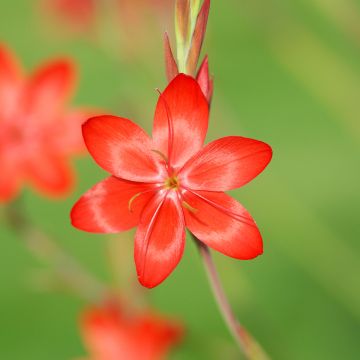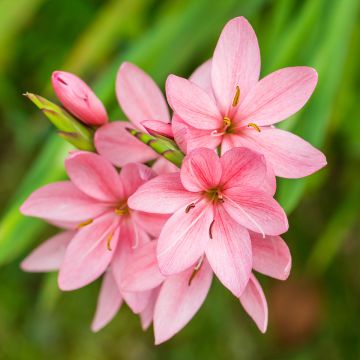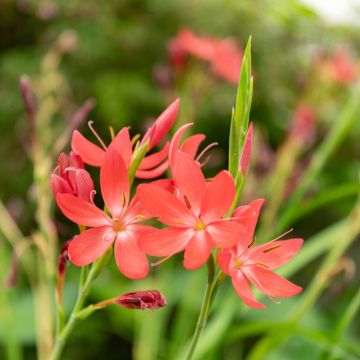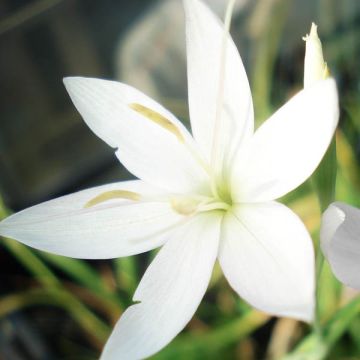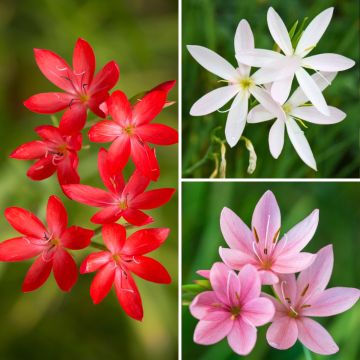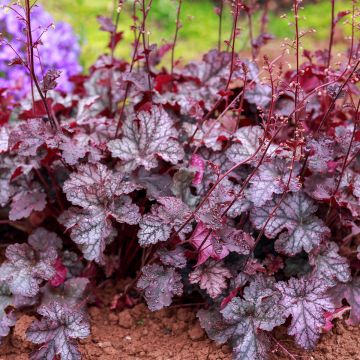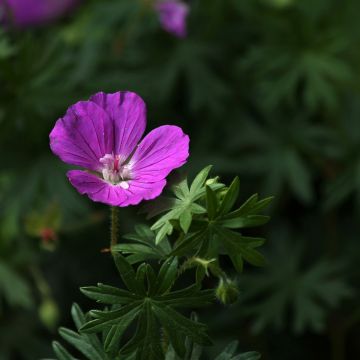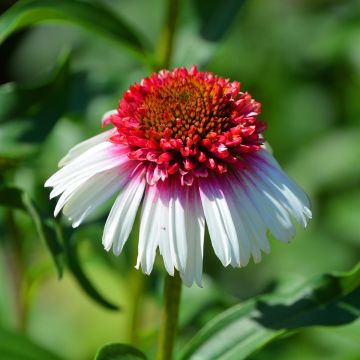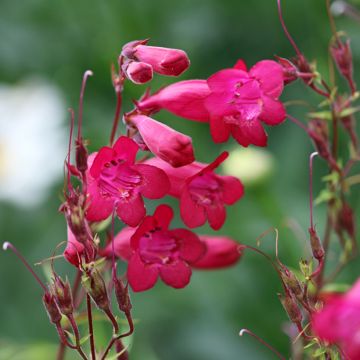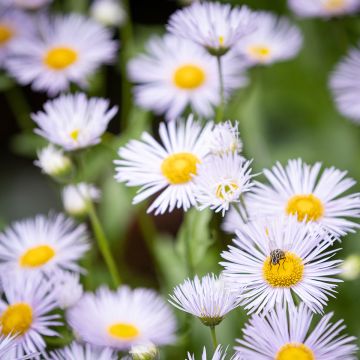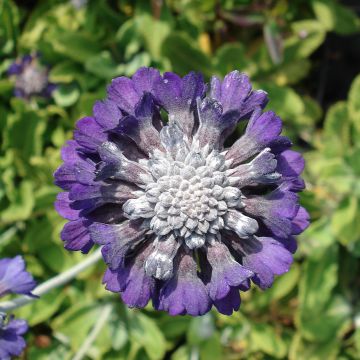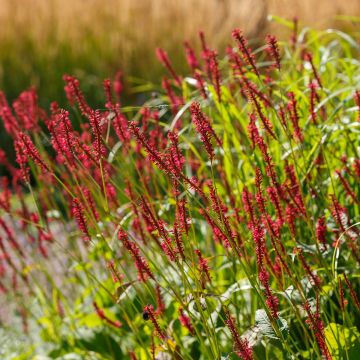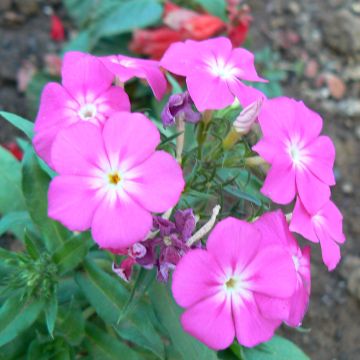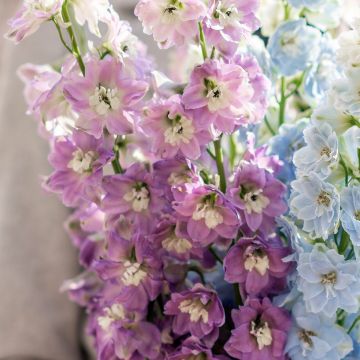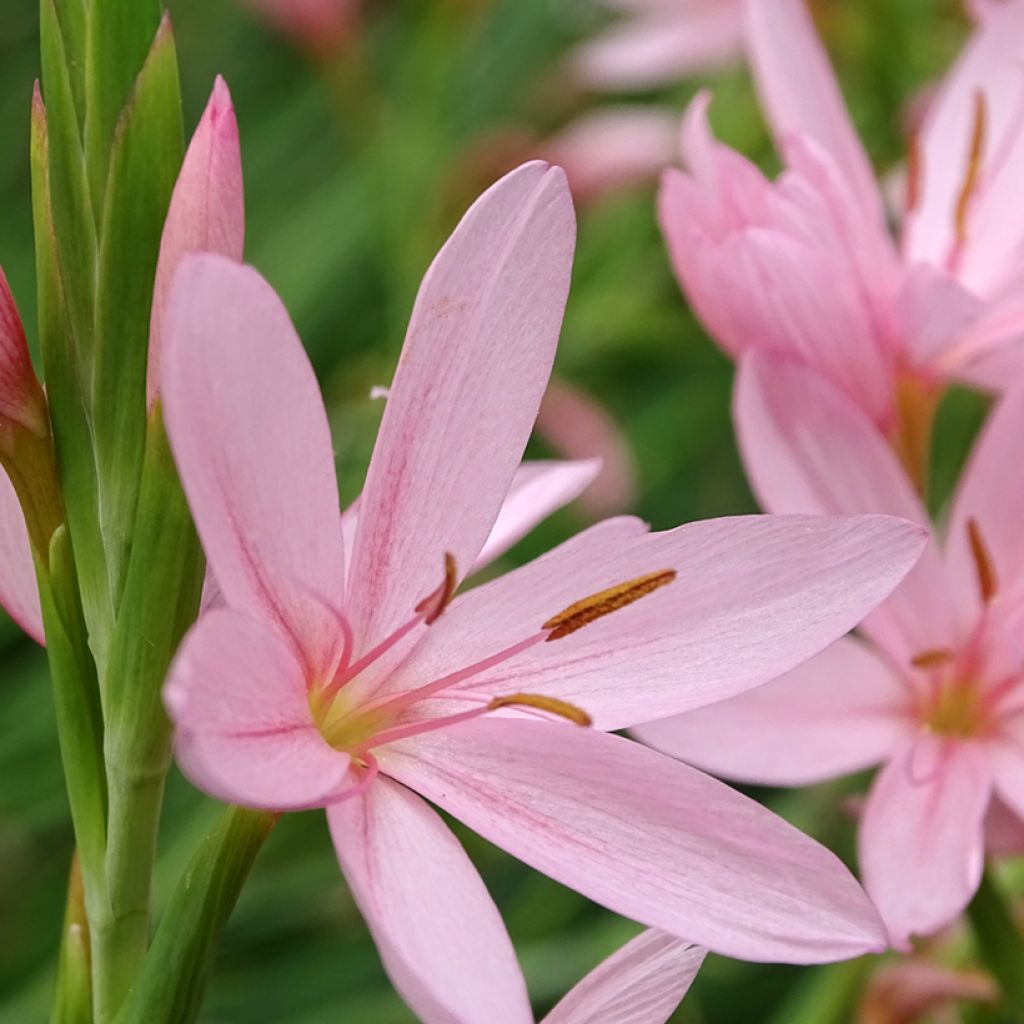

Schizostylis coccinea Mrs Hegarty
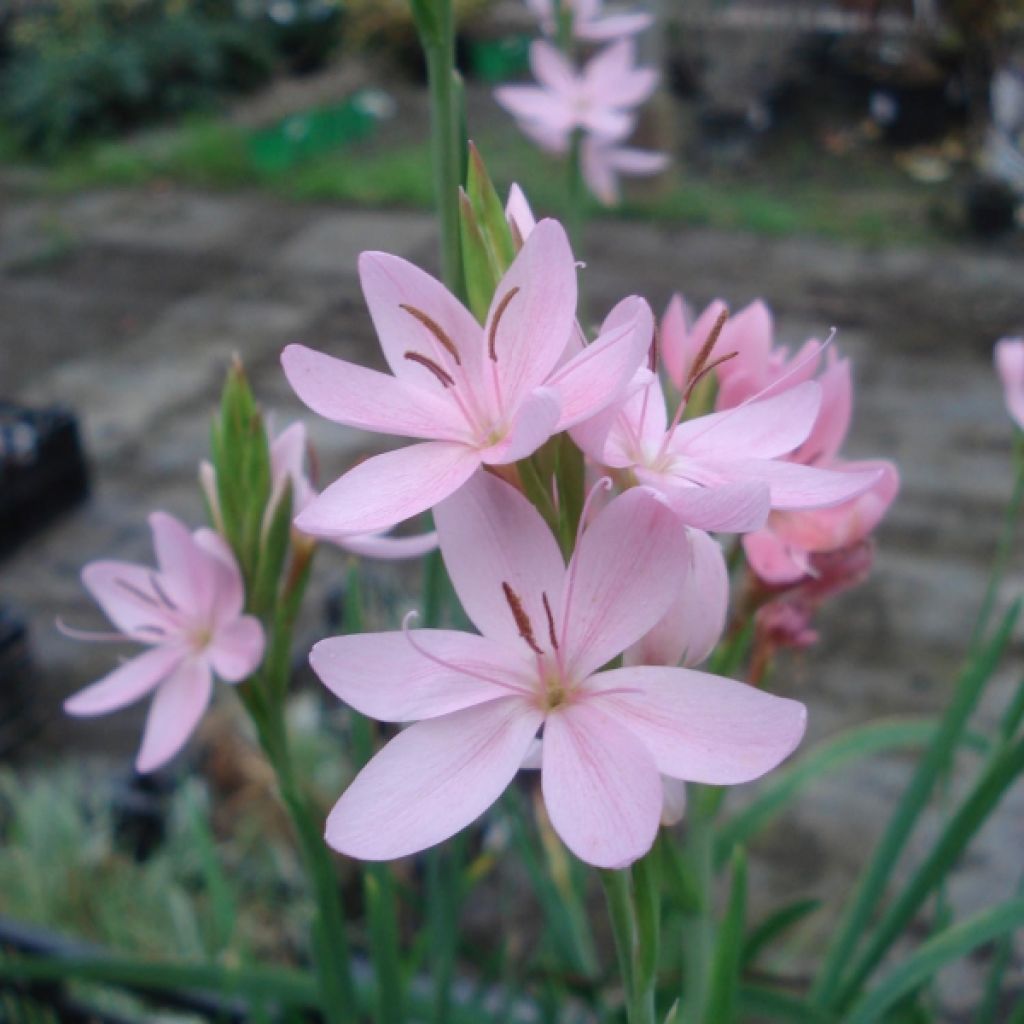

Schizostylis coccinea Mrs Hegarty
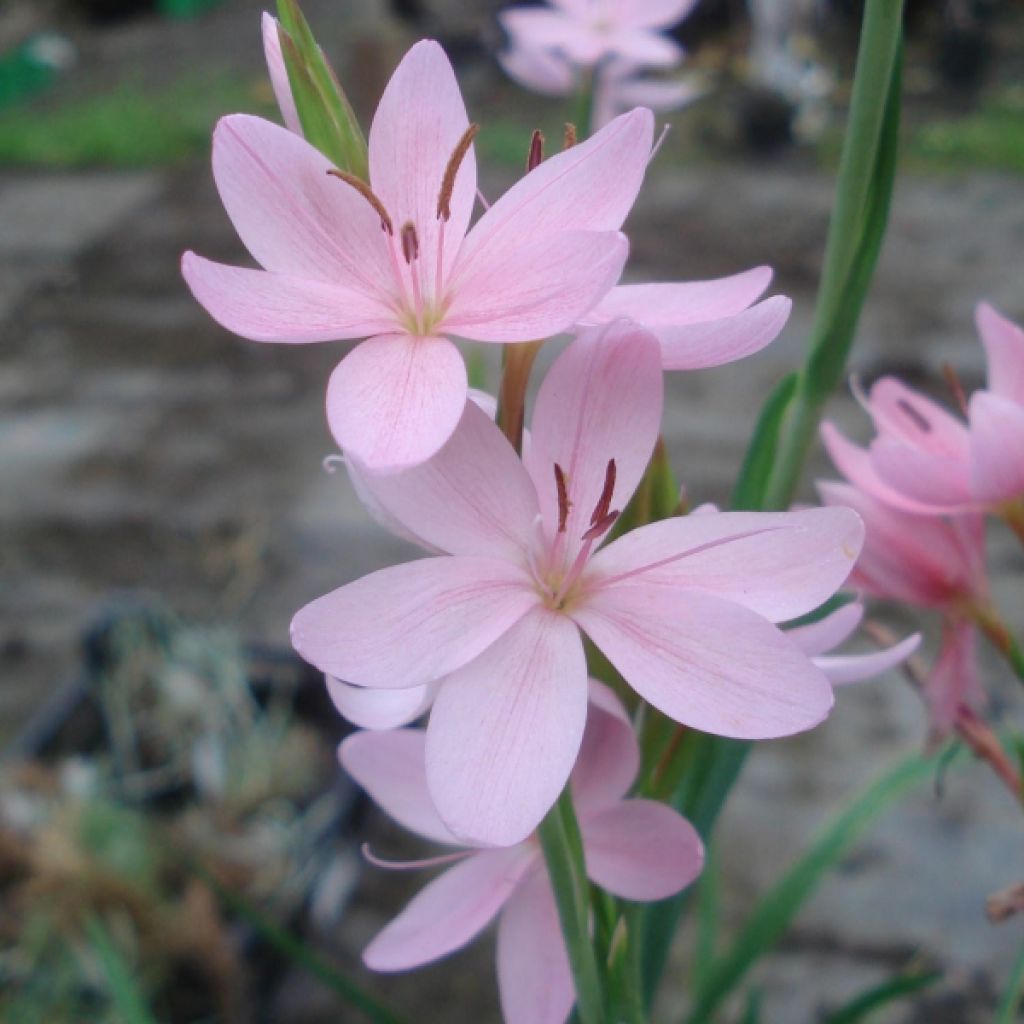

Schizostylis coccinea Mrs Hegarty
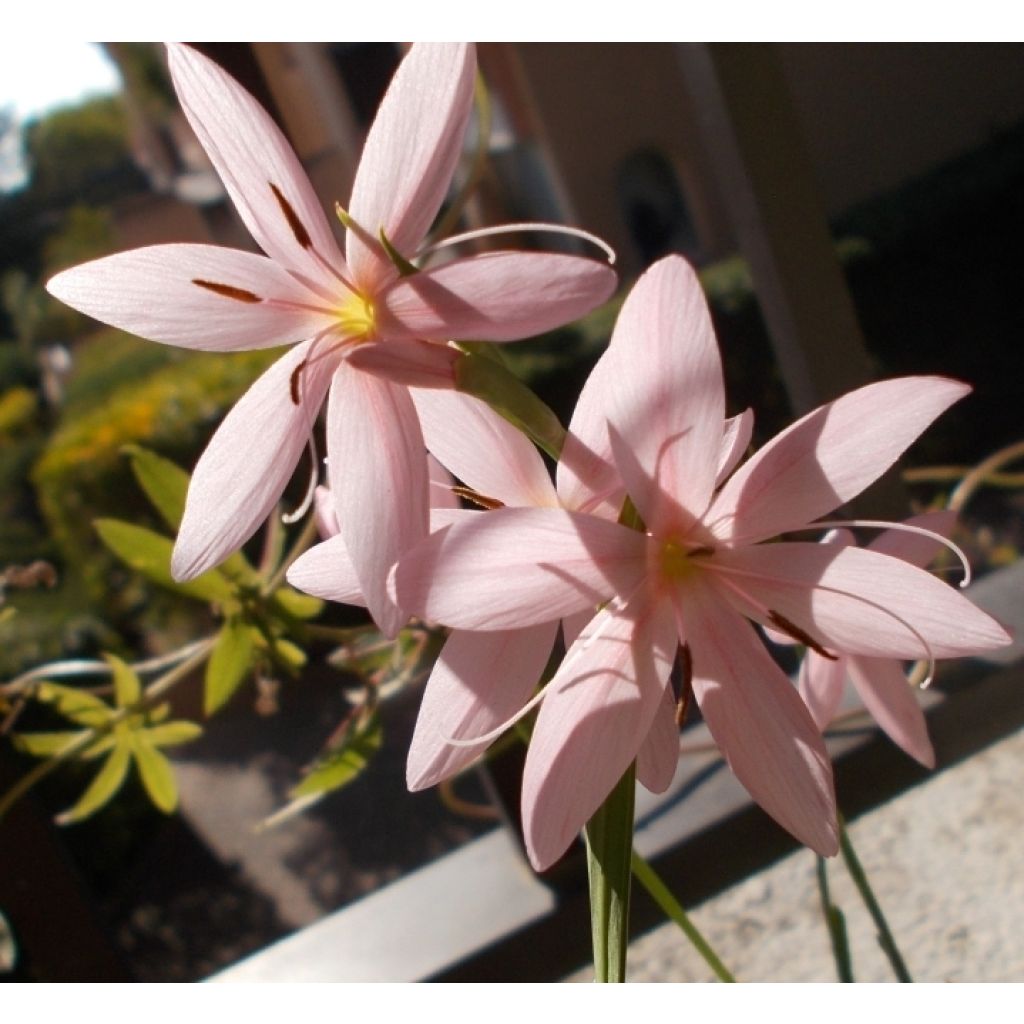

Schizostylis coccinea Mrs Hegarty
Schizostylis coccinea Mrs Hegarty
Schizostylis coccinea Mrs Hegarty
Crimson flag Lily, Kaffir lily
This item cannot be shipped to the selected country
Delivery charge from €5.90
Delivery charge from €5.90
More information
Schedule delivery date,
and select date in basket
This plant carries a 12 months recovery warranty
More information
We guarantee the quality of our plants for a full growing cycle, and will replace at our expense any plant that fails to recover under normal climatic and planting conditions.
From €5.90 for pickup delivery and €6.90 for home delivery
Express home delivery from €8.90.
From €5.90 for pickup delivery and €6.90 for home delivery
Express home delivery from €8.90.

Does this plant fit my garden?
Set up your Plantfit profile →
Description
Schizostylis coccinea 'Mrs Hegarty' is a lovely selection of the cape lily, a vigorous rhizomatous perennial that thrives on the banks of water bodies and in damp meadows. In late summer or early autumn, this plant produces pale-pink floral spikes that somewhat resemble the stems of botanical gladioli. The foliage, in dense and spreading clumps, persists throughout winter. Apart from a relative hardiness, it is easily cultivated in sunny locations with moist soil.
Schizostylis coccinea, also known as Hesperantha coccinea, is a plant from the Iridaceae family, like gladiolus, iris, and crocosmia. It is also called scarlet gladiolus. It is a perennial herbaceous plant with rhizomatous and suckering roots originating from South Africa and Zimbabwe. Its cold hardiness does not exceed -11°C (12.2°F) for a short period. Growing rapidly, it forms slender, spreading clumps, reaching about 40cm (16in) in height and 30 to 40cm (12 to 16in) in spread. The plant colonises the soil through its rhizomes. The foliage persists throughout winter in regions with minimal frost. The leaves are slightly trailing, ribbon-like, and bright green in colour. They measure 1cm (0.4in) wide and up to 40cm (16in) long. Flowering is late, usually occurring between September and November. Thin floral stems emerge from the foliage, each reaching 60cm (24in) in height and bearing 4 to 10 alternate star-shaped flowers. Each flower consists of 6 petals and measures approximately 3.5 to 4cm (1 to 2in) in diameter. In 'Mrs Hegarty', the flowers are a delicate pink colour with a pale yellow-green centre.
Plant Schizostylis coccinea 'Mrs Hegarty' on the moist banks of a pond or at the edge of a wetland bed, alongside knotweeds, lobelias, and loosestrifes, for example. This plant does not tolerate drought and requires regular watering when rainfall is scarce. It can also be grown in containers, keeping the substrate consistently moist. In this case, overwinter the pots frost-free in a bright, unheated room. The flowers are beautiful and long-lasting in bouquets.
Report an error about the product description
Schizostylis coccinea Mrs Hegarty in pictures
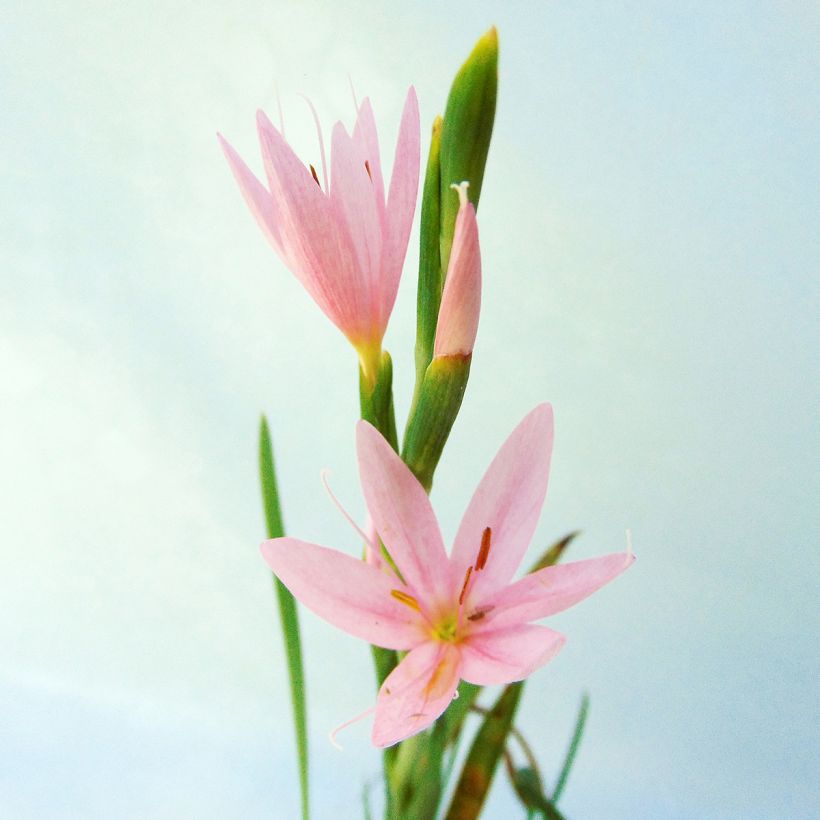

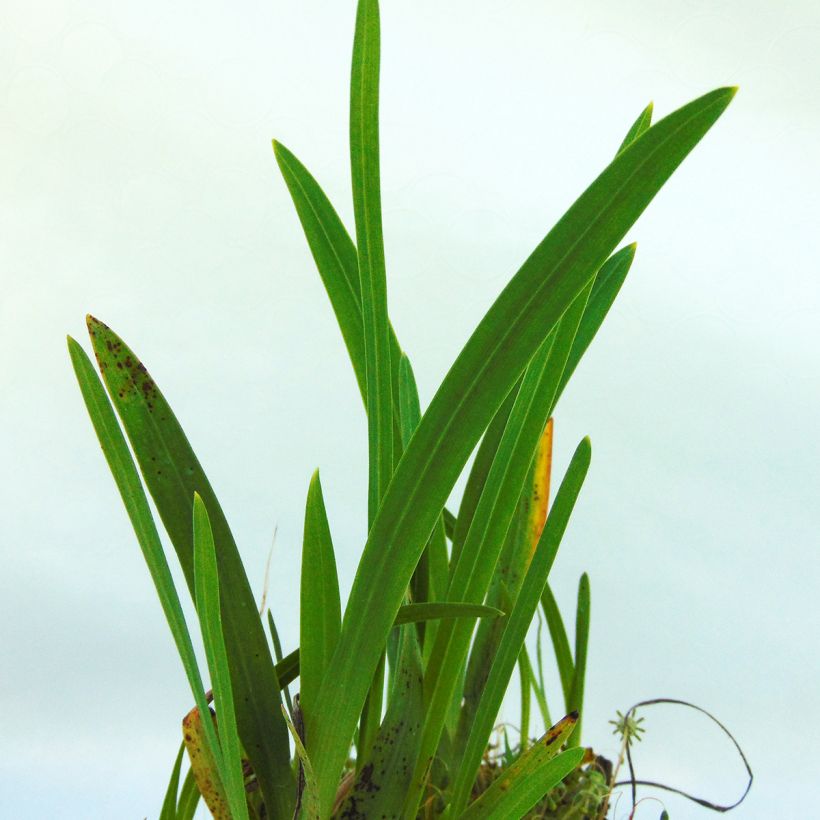

Flowering
Foliage
Plant habit
Botanical data
Schizostylis
coccinea
Mrs Hegarty
Iridaceae
Crimson flag Lily, Kaffir lily
South Africa
Other Schizostylis
Planting and care
Plant Schizostylis coccinea 'Mrs Hegarty' in a sunny position in humus or clay soil that is always slightly moist or even waterlogged. Protect it from cold winds. Prune the foliage and cover the soil with organic mulch in winter in slightly cold regions. This young plant appreciates wet areas, next to a pond. The rootstock can be planted up to 10cm (4in) below the water surface. Hardiness: -11°C (12.2°F) at its coldest.
Pot cultivation is possible, in a rich substrate kept moist. The pots should be overwintered frost-free, in a bright room or an unheated greenhouse. Reduce watering slightly in winter.
Easy propagation in spring by taking pieces of rootstock: cut at the natural separations. Dividing clumps is necessary every 3 or 4 years, to prevent the plant from weakening.
It is not very susceptible to diseases and pests.
Planting period
Intended location
Care
-
, onOrder confirmed
Reply from on Promesse de fleurs
Summer flowering perennials
Haven't found what you were looking for?
Hardiness is the lowest winter temperature a plant can endure without suffering serious damage or even dying. However, hardiness is affected by location (a sheltered area, such as a patio), protection (winter cover) and soil type (hardiness is improved by well-drained soil).

Photo Sharing Terms & Conditions
In order to encourage gardeners to interact and share their experiences, Promesse de fleurs offers various media enabling content to be uploaded onto its Site - in particular via the ‘Photo sharing’ module.
The User agrees to refrain from:
- Posting any content that is illegal, prejudicial, insulting, racist, inciteful to hatred, revisionist, contrary to public decency, that infringes on privacy or on the privacy rights of third parties, in particular the publicity rights of persons and goods, intellectual property rights, or the right to privacy.
- Submitting content on behalf of a third party;
- Impersonate the identity of a third party and/or publish any personal information about a third party;
In general, the User undertakes to refrain from any unethical behaviour.
All Content (in particular text, comments, files, images, photos, videos, creative works, etc.), which may be subject to property or intellectual property rights, image or other private rights, shall remain the property of the User, subject to the limited rights granted by the terms of the licence granted by Promesse de fleurs as stated below. Users are at liberty to publish or not to publish such Content on the Site, notably via the ‘Photo Sharing’ facility, and accept that this Content shall be made public and freely accessible, notably on the Internet.
Users further acknowledge, undertake to have ,and guarantee that they hold all necessary rights and permissions to publish such material on the Site, in particular with regard to the legislation in force pertaining to any privacy, property, intellectual property, image, or contractual rights, or rights of any other nature. By publishing such Content on the Site, Users acknowledge accepting full liability as publishers of the Content within the meaning of the law, and grant Promesse de fleurs, free of charge, an inclusive, worldwide licence for the said Content for the entire duration of its publication, including all reproduction, representation, up/downloading, displaying, performing, transmission, and storage rights.
Users also grant permission for their name to be linked to the Content and accept that this link may not always be made available.
By engaging in posting material, Users consent to their Content becoming automatically accessible on the Internet, in particular on other sites and/or blogs and/or web pages of the Promesse de fleurs site, including in particular social pages and the Promesse de fleurs catalogue.
Users may secure the removal of entrusted content free of charge by issuing a simple request via our contact form.
The flowering period indicated on our website applies to countries and regions located in USDA zone 8 (France, the United Kingdom, Ireland, the Netherlands, etc.)
It will vary according to where you live:
- In zones 9 to 10 (Italy, Spain, Greece, etc.), flowering will occur about 2 to 4 weeks earlier.
- In zones 6 to 7 (Germany, Poland, Slovenia, and lower mountainous regions), flowering will be delayed by 2 to 3 weeks.
- In zone 5 (Central Europe, Scandinavia), blooming will be delayed by 3 to 5 weeks.
In temperate climates, pruning of spring-flowering shrubs (forsythia, spireas, etc.) should be done just after flowering.
Pruning of summer-flowering shrubs (Indian Lilac, Perovskia, etc.) can be done in winter or spring.
In cold regions as well as with frost-sensitive plants, avoid pruning too early when severe frosts may still occur.
The planting period indicated on our website applies to countries and regions located in USDA zone 8 (France, United Kingdom, Ireland, Netherlands).
It will vary according to where you live:
- In Mediterranean zones (Marseille, Madrid, Milan, etc.), autumn and winter are the best planting periods.
- In continental zones (Strasbourg, Munich, Vienna, etc.), delay planting by 2 to 3 weeks in spring and bring it forward by 2 to 4 weeks in autumn.
- In mountainous regions (the Alps, Pyrenees, Carpathians, etc.), it is best to plant in late spring (May-June) or late summer (August-September).
The harvesting period indicated on our website applies to countries and regions in USDA zone 8 (France, England, Ireland, the Netherlands).
In colder areas (Scandinavia, Poland, Austria...) fruit and vegetable harvests are likely to be delayed by 3-4 weeks.
In warmer areas (Italy, Spain, Greece, etc.), harvesting will probably take place earlier, depending on weather conditions.
The sowing periods indicated on our website apply to countries and regions within USDA Zone 8 (France, UK, Ireland, Netherlands).
In colder areas (Scandinavia, Poland, Austria...), delay any outdoor sowing by 3-4 weeks, or sow under glass.
In warmer climes (Italy, Spain, Greece, etc.), bring outdoor sowing forward by a few weeks.

































